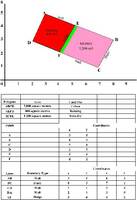- England
- Scotland
- France
- Holland
- Germany
- Italy
- Spain
- Portugal
- USA
- China
- Japan
- India
- Iran
- Advice
- Gardens
- England
- Scotland
- France
- Holland
- Germany
- Italy
- Spain
- Portugal
- USA
- China
- Japan
- India
- Iran
- Advice
- Garden Tours
Book: Landscape Planning and Environmental Impact Design: from EIA to EID
Chapter: Chapter 11 Urbanisation and growth management
Tree planting is one of the cheapest and most effective methods of giving coherence to building development. It is for this reason that all the British new towns have carried out extensive planting programmes. Telford and Milton Keynes both describe themselves as 'forest' new towns (Aldous 1979: 25-27). The planting programmes undoubtedly have a beneficial effect and the resulting 'verdure' is one of the main reasons given by foreign visitors for liking the British new towns. The planting could, however, have been more effective. Many trees were planted on small patches of leftover land, instead of forming part of a wider landscape strategy ï¾ and too many trees died because of careless soil management prior to planting. Subsoil has often been overï¾compacted by earthmoving plant and large quantities of topsoil have been lost during the operations. Tree-planting has been most successful, both horticulturally and aesthetically, when it has been used to achieve broad landscape objectives, such as the visual reinforcement of ridge lines, valley sides and water courses, or the formation of avenues, shelter belts, and parks. It has been less successful when treated as a cosmetic. The Chairman of Bracknell Development Corporation, Sir Lancelot Keay, said that 'a new town should not be seen without trees, "just as a woman should not be seen without her makeï¾up"' (Parris & Parris 1981: 34). Bracknell lacks a coherent landscape structure. All the British new towns have taken advantage of existing woodlands and hedgerows but it is disappointing that few of them have carried out tree planting schemes in advance of building development. Cumbernauld was one of the first new towns to undertake a serious forestry programme. Youngman advised the Development Corporation to adopt 'a vigorous forest policy' in order to achieve 'shelter and mass planting within the town; an economic use for such land as is unsuitable for building and yet cannot be fitted into the farming pattern' (Youngman 1957). He recommended that the new woodlands should be managed on the selection system, but with amenity, not timber production, as the primary goal. Stevenage has an urban forestry policy which has created a network of town woods. By 1966 it had 112 ha. of woodland planted and managed under the Forestry Commission's dedication scheme (Balchin 1980: 207). They should be run as community forests (cross ref to ch 8). Advance planting was done in the outlying areas of Redditch, (Turner 1974) and at Warrington tree belts were established three years in advance of building contracts. The Oakwood district of Warrington 'is an attempt to put Nan Fairbrother's vision into practice' (Tregay, R., Gustavsson 1983: 19). She said: 'we should surround our towns and cities with trees' (Fairbrother 1970: 324). Trees which are established before building takes place grow better because the soil has not been disturbed. Earthworks cause compaction and destroy the crumb structure of topsoil. When building does take place it is a great advantage to have a framework of existing planting. This fact has been demonstrated by the Scandinavian new towns and by those British new towns, including the southern parts of Crawley and New Ash Green, which have expanded into existing woodland [Fig 11.19]. 1.19 A GIS is a spatial database. Areas on a map are produced from database tables, and vice-versa.
